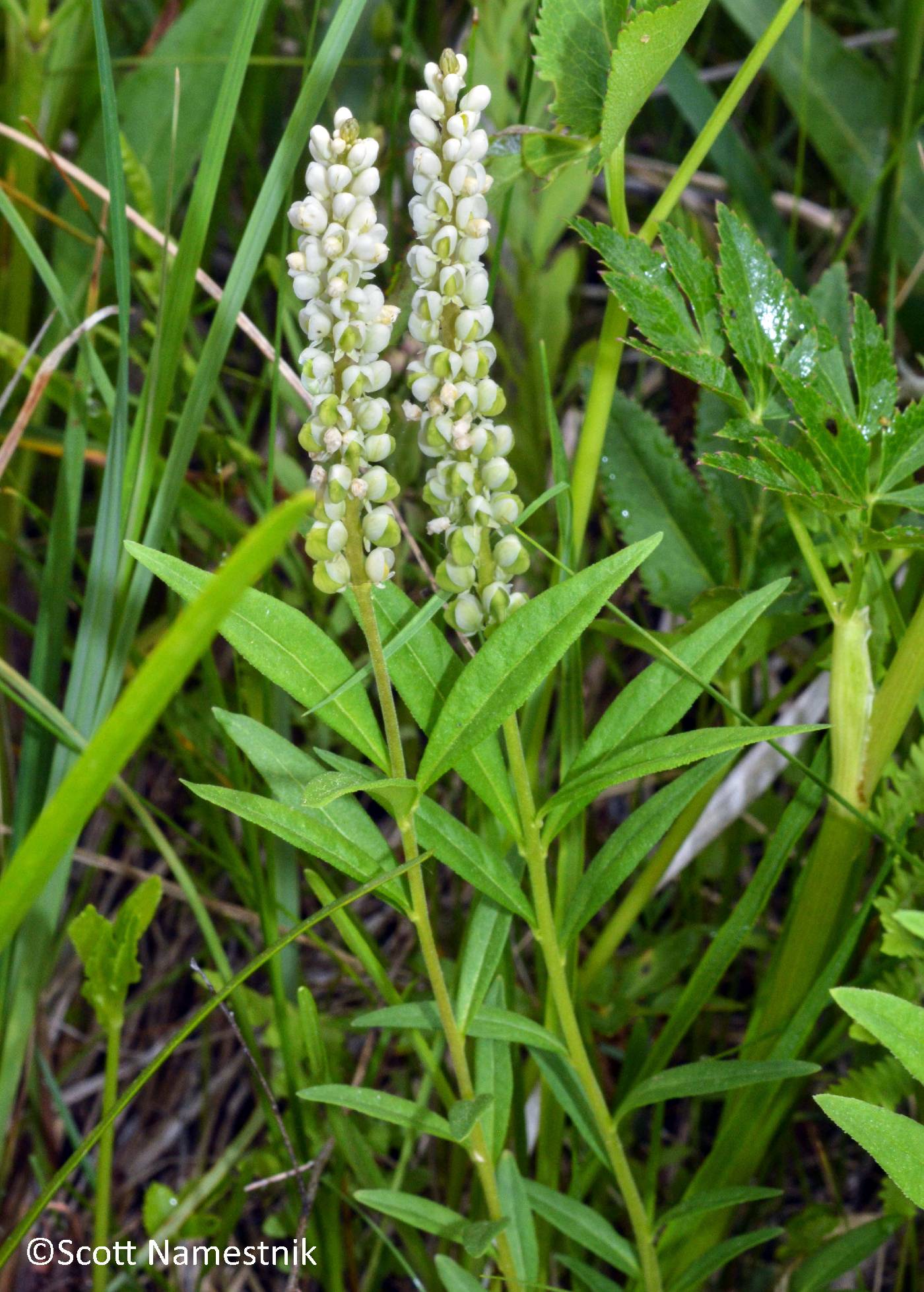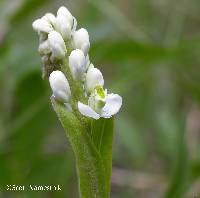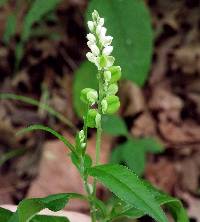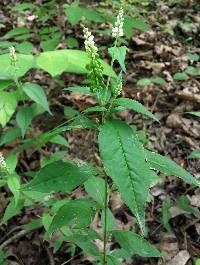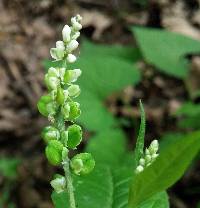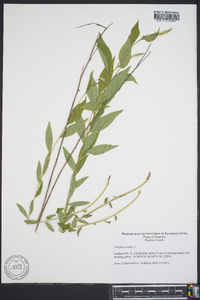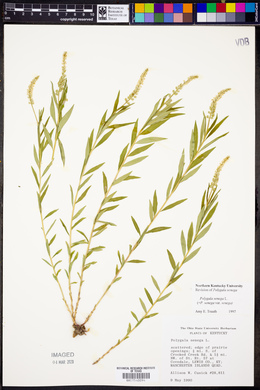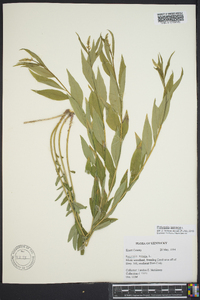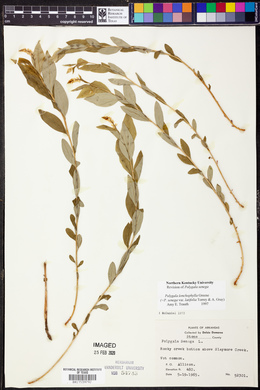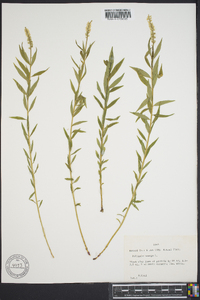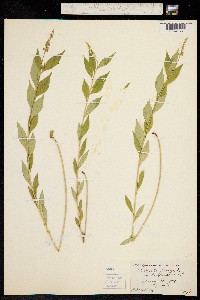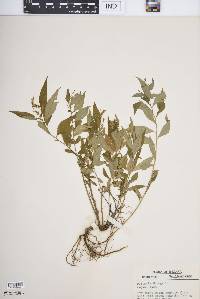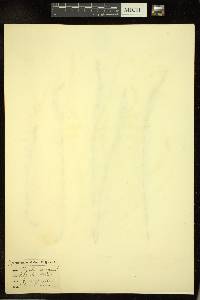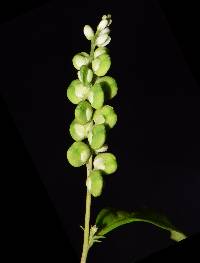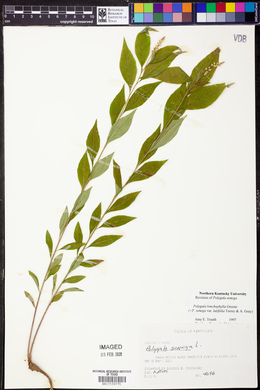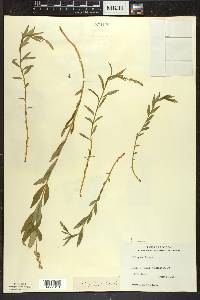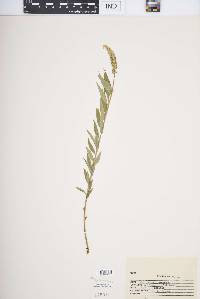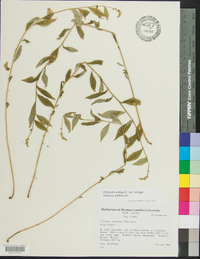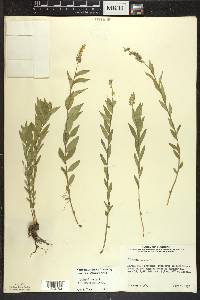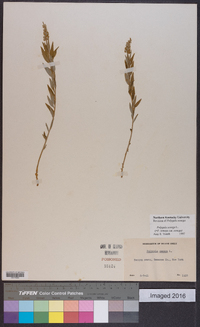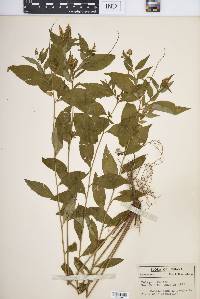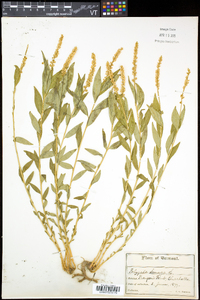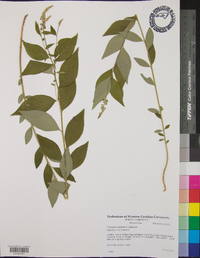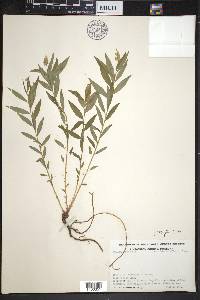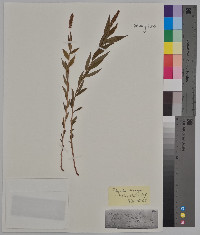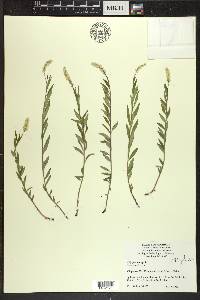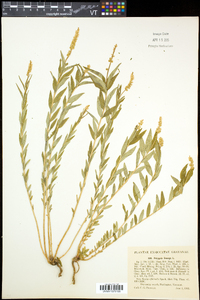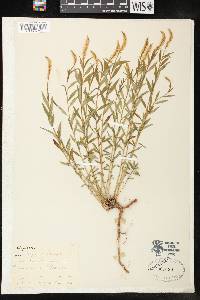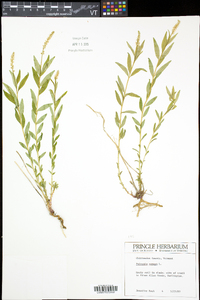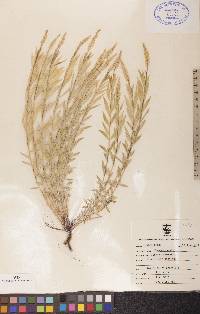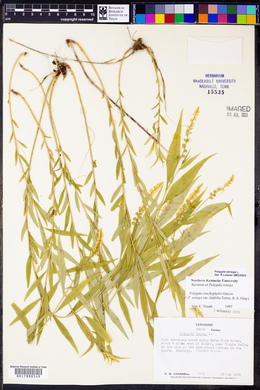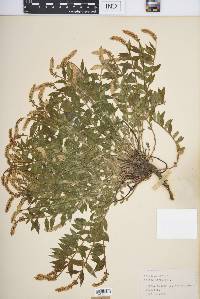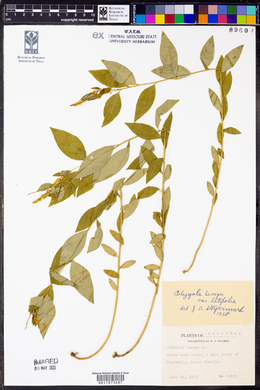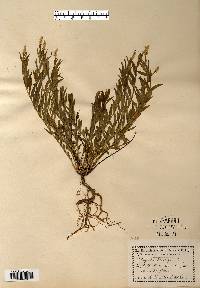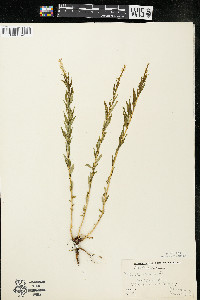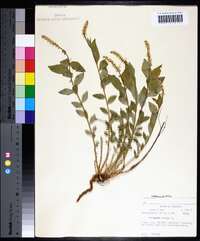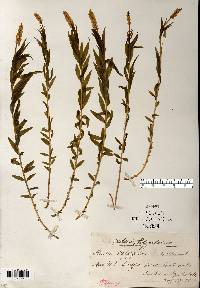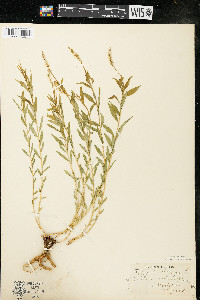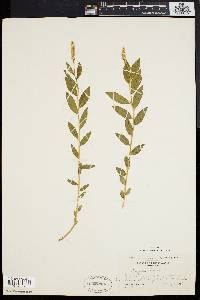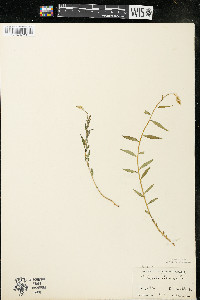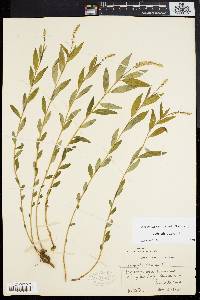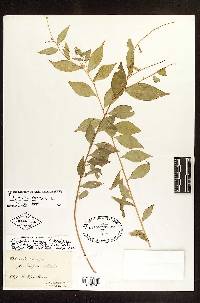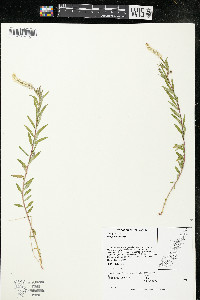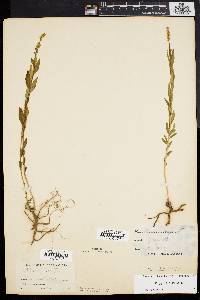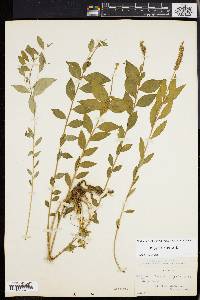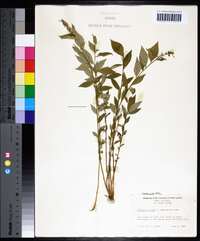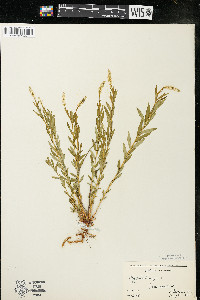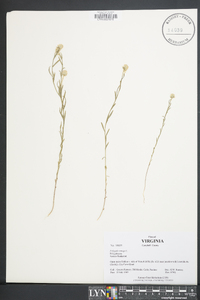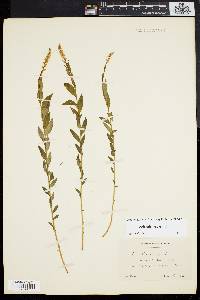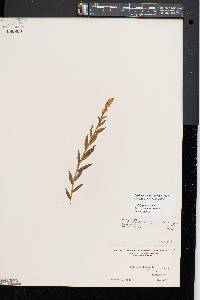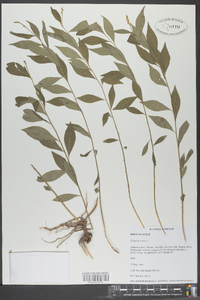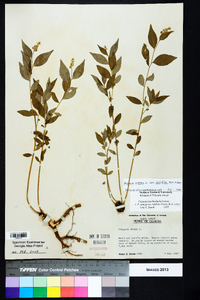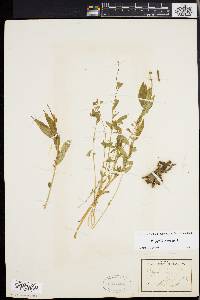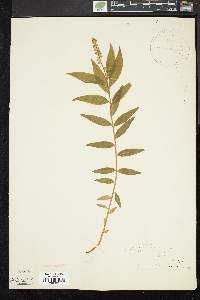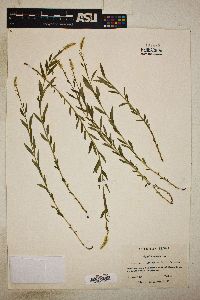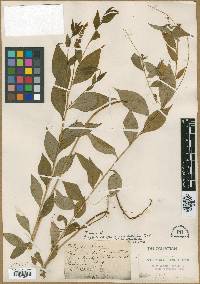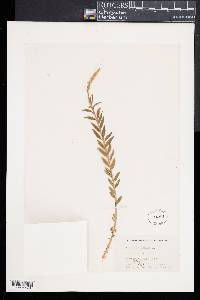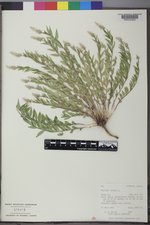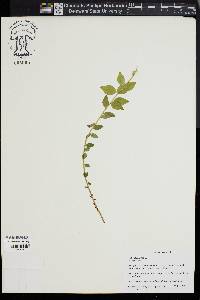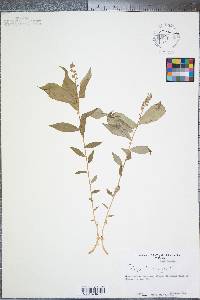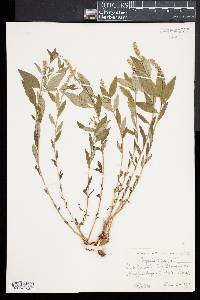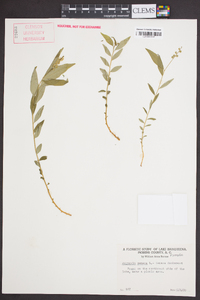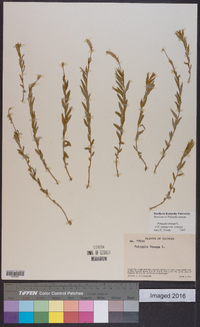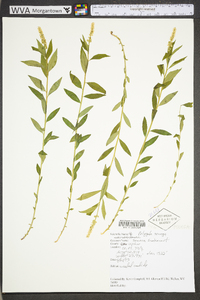Polygala senega
|
|
|
|
Family: Polygalaceae
Seneca snakeroot, more...Seneca-Snakeroot
|
Perennial herb 10 - 50 cm tall Leaves: alternate, highly reduced or scale-like near base and gradually increasing in size up the stem, 1.3 - 8 cm long, 2.5 - 15 mm wide, lance-shaped to linear, tapering at both ends. Inflorescence: a dense cluster (raceme), 1.5 - 4 cm long, 5 - 8 mm across. Flowers: white, with three small outer sepals and two petal-like inner sepals (wings) 3 - 3.5 mm long and 2.2 - 2.5 mm wide. The three petals are fused into a tube shorter than the wings, and one petal is fringed. Fruit: a dehiscent capsule, 2.5 - 3.5 mm long, 3 - 3.8 mm wide, rounded, persistent. The seeds are 2.5 mm long and hairy, having an appendage (aril) nearly as long as the seed. Stems: many, usually unbranched, very lightly hairy. Similar species: Polygala senega, Polygala sanguinea, Polygala polygama, Polygala incarnata, and Polygala paucifolia all have alternate leaves. Polygala paucifolia is a creeping perennial with flowers longer than 11 mm. Polygala polygama has pink flowers in loose clusters. Polygala incarnata and Polygala sanguinea each have a single stem. Flowering: mid May to mid June Habitat and ecology: Locally common in dry and often gravelly prairies. Occurence in the Chicago region: native Etymology: Polygala comes from the Greek words polys, meaning much, and gala meaning milk, referring to the old belief that milkworts would aid in milk secretion. Senega refers to the use of this species by the Seneca indians. Author: The Morton Arboretum Perennial; stems mostly clustered, 1-5 dm, usually unbranched, minutely puberulent; lvs alternate, the lowest reduced or scale-like, the others lance-linear or wider, 3-8 cm נ3-30 mm; racemes dense, 1.5-4 cm נ5-8 mm, the peduncle 1-3 cm; fls white; wings broadly elliptic, 3-3.5 mm, exceeding the cor; fr suborbicular; seeds hairy, 2-3 mm, the aril nearly or quite as long. Dry or moist woods and prairies, often in calcareous soil; N.B. to Alta., s. to Ga. and Ark. May, June. Gleason, Henry A. & Cronquist, Arthur J. 1991. Manual of vascular plants of northeastern United States and adjacent Canada. lxxv + 910 pp. ©The New York Botanical Garden. All rights reserved. Used by permission. From Flora of Indiana (1940) by Charles C. Deam This plant varies greatly in size and in the width' of the leaves. Plants with most of the upper blades more than 7 mm wide are referred to variety latifolia T. & G. Most of our plants belong to the wideleaf form. However, I am not able to separate satisfactorily the wideleaf from the narrowleaf form. Large, branched plants may have on one branch leaves of the typical form and on others leaves like those of the variety. The width of the spike is another character used to separate the two forms and it happens that in my 34 specimens the widest spike is on a plant with narrow leaves. The stems of small plants are always simple but large plants may be either simple or branched. Plants of a prairie or sandy habitat have narrower leaves than those of wooded limestone slopes. Usually on wooded slopes along streams and about lakes. Rarely in the open in a prairie habitat. …… Indiana Coefficient of Conservatism: C = 8 Wetland Indicator Status: FACU |

